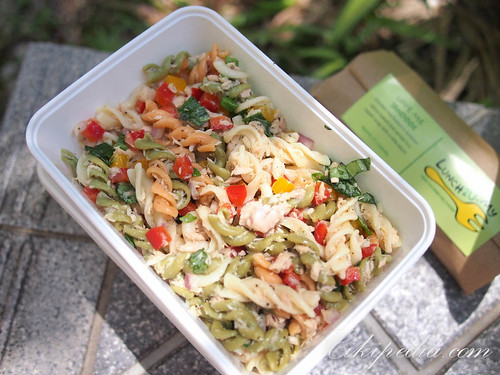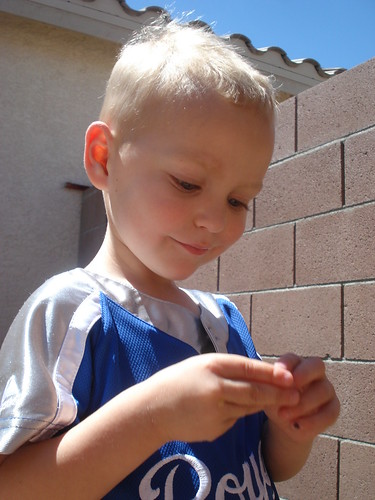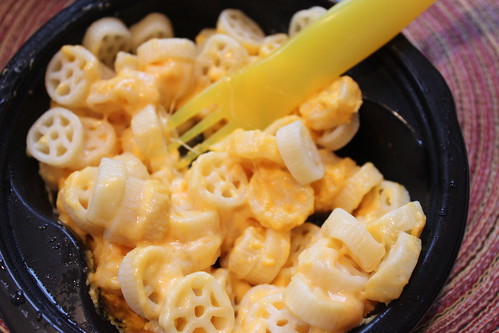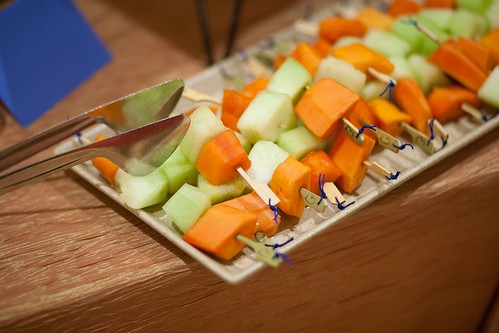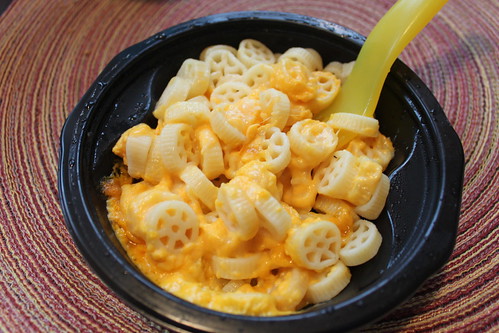Some cool cell membrane images:
Licorice weed, Zhu zai cao, Sweetbroom, Broomweed, Mithi Patti, Scoparia dulcis …#112

Image by Vietnam Plants & The USA. plants
Hoa Cam Thảo Nam rất nhỏ , vào khoảng từ 1 đến 2 mm.
Scoparia dulcis ‘s flowers are very tiny, about 1 or 2 mm .
Chụp hình ngày 15-9-2010 tại thành phố Hồ chí Minh ( Saigon ) , miền Nam Việt Nam.
Taken on September 15, 2012 in Ho chi Minh city, Southern of Vietnam.
Vietnamese named : Cam Thảo Nam, Cam Thảo đất,
Common names : Licorice weed , Zhu zai cao (Chin.),Sweetbroom (Engl.), Broomweed (Engl.), Escobilla amarga (Sp.), Silhigop (Bis.) , Mala-anis (Pamp.) , Saang-kabayo (Tag.), Tachin-karnero (Iv.), Mithi Patti ( Hindu ).
Scientist name : Scoparia dulcis L.
Synonyms :
FamilyScrophulariaceae – Figwort family
Group : Dicot
Duration : Annual – Perennial
Growth Habit : Forb/herb – Subshrub
Kingdom : Plantae – Plants
Subkingdom : Tracheobionta – Vascular plants
Superdivision : Spermatophyta – Seed plants
Division : Magnoliophyta – Flowering plants
Class : Magnoliopsida – Dicotyledons
Subclass : Asteridae
Order : Scrophulariales
Genus : Scoparia L. – licorice weed
Species : Scoparia dulcis L. – licorice weed
**** www.uphcm.edu.vn/caythuoc/index.php?q=node/223 : NHẤP VÀO LINK ĐỂ ĐỌC THÊM, RẤT CẢM ƠN.
Phân bố, sinh học và sinh thái:
Gốc ở nhiệt đới Châu Mỹ, được thuần hóa trong tất cả các vùng nhiệt đới của thế giới. Ở nước ta, cây mọc khắp nơi từ Bắc vào Nam. Thường gặp trên đất hoang, dọc bờ đường, trên các dải cát của các sông và trong các ruộng khô, ở vùng thấp.
Bộ phận dùng:
Toàn cây (Herba Scopariae)
Thành phần hóa học:
Cây chứa alkaloid và một chất đắng; còn có chứa nhiều acid silicic và một hoạt chất gọi là amellin. Phần trên mặt đất có chứa một chất dầu sền sệt mà trong thành phần có dulciol, scopariol, (+)manitol, glucose. Rễ chứa (+)manitol, tannin, alkaloid, triterpenoids: friedelin, glutinol-a-amarin, acid betulinic, acid dulcinic, acid iflaionic, scoparic A, B, C, D scopadulcic (A: R = COOH, R’ = CH2OH; B: R = Me, R’ = COOH).
Tác dụng dược lý – Công dụng:
Thường dùng trị: cảm cúm, sốt, nóng nhiều, ho khan, ho có đàm. Lỵ trực trùng. Tê phù, phù thủng, giảm niệu. Dùng ngoài, ép lấy dịch từ cây tươi trị mụn nhọt, lở ngứa, eczema. Hoạt chất amellin dùng điều trị bệnh đái đường, thiếu máu, albumin niệu, ceton niệu, viêm võng mạc, những biến chứng kèm theo đái đường và làm các vết thương mau lành. Rễ trị đau bụng, kiết, lợi tiểu; thân trị ho, sốt, giải độc, trị kinh nguyệt nhiều hay đau, giúp sinh dễ; lá bổ, làm cường tráng dục tính, trị sạn, trị viêm phế quản.
**** caythuoc.chothuoc24h.com/cay-thuoc/C/1695/
Cam thảo đất, Cam thảo nam – Scoparia dulcis L., thuộc họ Hoa mõm sói – Scrophulariaceae.
Mô tả: Cây thảo mọc thẳng đứng, cao 30-80cm, có thân nhẵn hoá gỗ ở gốc và rễ to hình trụ. Lá đơn mọc đối hay mọc vòng ba lá một, phiến lá hình mác hay hình trứng có ít răng cưa ở nửa trên, không lông. Hoa nhỏ, màu trắng, mọc riêng lẻ hay thành từng đôi ở nách lá. Quả nang nhỏ chứa nhiều hạt.
Ra hoa quả vào tháng 5-7.
Bộ phận dùng: Toàn cây – Herba Scopariae.
Nơi sống và thu hái: Loài liên nhiệt đới mọc khắp nơi ở đất hoang ven các đường đi, bờ ruộng. Có thể trồng bằng hạt vào mùa xuân. Vào mùa xuân hè, thu hái toàn cây rửa sạch, thái nhỏ dùng tươi hoặc phơi hay sấy khô để dùng dần.
Thành phần hóa học: Cây chứa một alcaloid và một chất đắng; còn có nhiều acid silicic và một hoạt chất gọi là amellin. Phần cây trên mặt đất chứa một chất dầu sền sệt, mà trong thành phần có dulciol, scopariol, (+) manitol, glucose. Rễ chứa (+) manitol, tanin, alcaloid, một hợp chất triterpen. Vỏ rễ chứa hexcoxinol, b-sitosterol và (+) manitol.
Tính vị, tác dụng: Cam thảo đất có vị ngọt, tính mát; có tác dụng bổ tỳ, nhuận phế, thanh nhiệt, giải độc và lợi tiểu.
Amellin trong cây là một chất chống bệnh đái đường, dùng uống làm giảm đường – huyết và các triệu chứng của bệnh đái đường và tăng hồng cầu. Nó cũng ngăn cản sự tiêu hao mô và dẫn đến sự tiêu thụ tốt hơn protein trong chế độ ăn, làm giảm mỡ trong mô mỡ và thúc đẩy quá trình hàn liền vết thương.
Công dụng, chỉ định và phối hợp: Thường dùng trị: 1. Cảm cúm, sốt, nóng nhiều, ho khan, ho có đờm; 2. Lỵ trực tràng; 3. Tê phù, phù thũng, giảm niệu. Liều dùng 8-12g khô hoặc 20-40g tươi, dạng thuốc sắc. Để tươi chữa ho khan; sao thơm chữa ho đờm và tiêu sưng. Dùng ngoài, ép lấy dịch từ cây tươi trị mụn nhọt, lở ngứa, eczema.
Nước hãm lá Cam thảo đất dùng làm thuốc súc miệng và ngậm chữa đau răng. Hoạt chất amellin dùng điều trị bệnh đái đường, thiếu máu, albumin niệu, ceton niệu, viêm võng mạc, những biến chứng kèm theo đái đường và làm các vết thương mau lành.
Có thể dùng thay Cam thảo để chữa sốt, say sắn, giải độc cơ thể.
Đơn thuốc:
1. Lỵ trực trùng: Cam thảo đất, Rau má, lá Rau muống, Địa liền, mỗi vị 30g, sắc uống.
2. Cảm cúm, nóng ho: Cam thảo đất tươi 30g, Diếp cá 15g, Bạc hà 9g, sắc uống. Có thể phối hợp với Rau má, Cỏ tranh, Sài hồ nam, Mạn kinh, Kim ngân, Kinh giới.
________________________________________________________________
**** plants.usda.gov/java/profile?symbol=Scdu3
**** www.hort.purdue.edu/newcrop/cropfactsheets/scoparia.html
**** www.tropilab.com/sweet-broom.html
**** en.wikipedia.org/wiki/Scoparia_dulcis
**** ayurvedicmedicinalplants.com/index.php?option=com_zoom&am…
**** www.ncbi.nlm.nih.gov/pubmed/16595962
Chem Pharm Bull (Tokyo). 2006 Apr;54(4):546-9.
Chemical and biological evaluation on scopadulane-type diterpenoids from Scoparia dulcis of Vietnamese origin.
Phan MG, Phan TS, Matsunami K, Otsuka H.
Source
Faculty of Chemistry, College of Natural Science, Vietnam National University, Hanoi, Vietnam.
Abstract
From the aerial parts of Scoparia dulcis L. (Scrophulariaceae) grown in Vietnam, four scopadulane-type diterpenoids (4-7), of which 7 is new and was given the trivial name scopadulcic acid C, together with nine known compounds were isolated. Their structures were elucidated by spectroscopic analyses. The absolute configurations of 4-7 were ascertained by applying the modified Mosher’s method to iso-dulcinol (6). The isolation of the lignans nirtetralin and niranthin for the first time from S. dulcis is also of chemotaxonomic interest. The cytotoxic activity in KB cells, inhibitory effect on LPS/IFNgamma-induced NO production, inhibition of multidrug resistance (MDR), and antibacterial and antifungal activities of the scopadulane-type diterpenoids 4-7 were examined in this study.
PMID: 16595962 [PubMed - indexed for MEDLINE] Free full text
**** www.stuartxchange.org/Malaanis.html
Botany:
· Erect, much branched, smooth, herbaceous, or half-woody plant 25 to 80 cm in height.
· Leaves: opposite and whorled, lanceolate to elliptic or oblanceolate, 0.5 to 2 cm long, pointed at both ends and narrowed below the short stalk, and toothed in the margins.
· Flowers: while, small, very numerous, and in pairs; their stalks slender, and 1 cm long or less. Sepals 4 or 5, imbricate, corolla rotate, 4-fid, the throat bearded, lobes subequal, white stamens 4, subequal.
Distribution
Ubiquitouos weedIn throughout the settled areas in low to medium altitudes; along roadsides, sides of ditches, and other more or less shaded and moist places.
Parts utilized:
· Whole plant.
· Collected from April to June.
· Wash, cut into pieces, dry under the sun.
Properties and Constituents
• Sweet and has cooling nature.
• Considered antipyretic, diuretic, analgesic, antiinflammatory, antifungal, antibacterial,
• Considered by some as aphrodisiac.
Constituents
• Study yielded diterpenoids, flavonoids, tannins, alkaloids, triterpenes, hexaconasol, b-sitosterol, ketone, dulcitone and amellin.
• Triterpene and mannitol isolated from the roots; dulcitol from aerial parts. (Source)
• Phytochemical studies revealed acacetin, amellin, amyrin, apigenin, benzoxazin, benzoxalinone, betulinic acid, daucosterol, dulcidion . . among others. Also isolated were a flavone glycoside and a diterpene. (source)
Uses
Folkloric
· Cold and fever, enteritis, diarrhea, beriberi, edema, difficulty in urination: Use decoction of 15 to 30 gms dried material.
· Miliaria: Rub the squeezed juice from fresh plant.
· In India, China and Southeast Asia, used for pain, fever, dysentery, diarrhea, cough, bronchitis, hypertension, piles and insect bites.
· In Vietnam, used for snakebites and antidote for cassava intoxication. Also, for pimples, impetigo, ulcers and eczema.
· In India, used for gonorrhea, to induce labor, and diabetes.
· In China, used for herpes.
· In Burma and India, herb infusion used as mouthwash for infected gums.
· In Brazilian folk medicine, used for bronchitis, gastric disorders, hemorrhoids, insect bites, skin wounds..
Others
· In Trinidad’s santowah ceremony, sweetbroom is used to sprinkle holy water.
Studies
• Antioxidant: (1) Free Radical Scavenging Activity of Scoparia dulcis Extract: Study showed strong antioxidant acitivity corresponding to the reduction of hydroxyl radical generation, a possible rationale for the weeds observed therapeutic effects. (2) Study showed significant decrease in TBARS and hyperperoxides formation in the brain of rats suggesting a role in protection against lipid peroxidation induced membrane damage. Results suggest, in addition to its antidiabetic effect, SD possess antioxidant potential.
• Antihyperglycemic / Anti-Diabetes: (1)Effect of an aqueous extract of Scoparia dulcis on blood glucose, plasma insulin and some polyol pathway enzymes in experimental rat diabetes: Study showed SD was effective in attenuating hyperglycemia in rats, possibly due to the decreased influx of glucoxe into the polyol pathway with increased activities of antioxidant enzymes and plasma insulin and decreased activity of sorbitol dehydrogenase. (2) Study showed the aqueous extract of Scoparia dulcis exhibited antihyperglycemic effect by attenuating biochemical alterations in streptozotocin-induced diabetic rats.
• Cytoprotective / Insulin-Secretagogue Activity: Study showed significant decrease in blood glucose with significantly increased plasma insulin level with use of aqueous extract of S dulcis in STZ-induced diabetic rats. Other results showed its insulin secretagogue activity and protection against STZ-mediated cytotoxicity. The glucose lowering effect was associated with potentiation of insulin release from the pancreatic islets.
• Anti-Ulcer: Study showed water extracts of S dulcis showed dose-dependent inhibition of indomethacin-induced gastric damage in rats validating its use in traditional medicine as an antacid and anti-ulcer agent.
• Antioxidant: Protective role of Scoparia dulcis plant extract on brain antioxidant status and lipidperoxidation in STZ diabetic male Wistar rats. Study showed levels of peroxidation markers in the brain were significantly a role in protection against lipidperoxidation-induced membrane damage.
• Antimicrobial / Antifungal: Phytochemical and antimicrobial study of an antidiabetic plant: Scoparia dulcis L.: Study of isolated fractions showed significant antimicrobial and antifungal activity against all tested organisms – S typhii, S aureus, E coli, B subtilis, P aeruginosa, P vulgaris and fungal strains (C albicans, A niger and F oxysporum).
• Antitumor: Scopadulcic acid B (SDB), a tetracyclic diterpenoid isolated from S dulcis, inhibited the effects of a tumor promoter, inhibited phopholipid synthesis and suppressed the promoting effect of TPA on skin tumor formation. Its potency is stronger than other natural anti-tumor promoting terpenoids.
• Antihyperlipidemic: Effect of Scoparia dulcis (Sweet Broomweed) in Streptozotocin Diabetic Rats: Study showed antidiabetic and antihyperlipidemic activity in normal and experimental diabetic rats.
• NGF Activity: Acetylated Flavonoid Glycosides Potentiating NGF Action from Scoparia dulcis: Three new acetylated flavonoid glycosides were isolated, two of which showed enhancing activity of nerve growth factor-mediated neurite outgrowth.
• Cytotoxicity: Study isolated four new diterpenes. Crude extracts and pure diterpenes suggested cytotoxicty.
• Beta-glucoronidase Inhibitor: Study isolated three labdane-type diterpene acids: scoparic acid A, B and C. Scoporic acid A was found to be a potent beta-glucoronidase inhibitor.
• Hepatoprotective / Antioxidant: Study isolated showed the hydroalcoholic extract of S dulcis exhibits significant hepatoprotective activity against carbon tetrachloride-induced liver damage in rats, an activity attributed to free radical scavenging activity.
• Anti-Trypanosomal Immunosuppression / Immunological Boosting: Previous findings suggest T. brucei is immunosuppressive. Study showed Scoparia dulcis provides a measure of immunological boost during experimental T. brucei infection in rabbits.
• Sympathomimetic Effects / Catecholamines: Study yielded both noradrenaline and adrenaline in the plant extract. The catecholamines may be responsible for the hypertensive and inotropic effects after parenteral administration of S dulcis extracts.
• Anti-Urolithiasis: Study investigating the inhibition of calcium oxalate, calcium phosphate and calcium carbonate mineralization by five medicinal plants – A aspera, P leschenaultii, S amplexicaulis, Scoparia dulcis and A lanata – showed that increased intake of the fruit juices and seed extracts of the test plants would be helpful in urinary stone prophylaxis. The sequestering of the insoluble calcium salts by the fruit juices may be due to single or mixed ligand chelation by the hydroxyl acids present in them.
• Anti-Inflammatory / Analgesic: Study results indicate that the extract of S dulcis possess analgesic effects probably related to its antiinflammatory activity, effects probably attributable to the presence of glutinol and flavonoids.
Availability
Wild-crafted.
Powders, extracts in the cybermarket.
**** www.ncbi.nlm.nih.gov/pubmed/15549711
J Biochem Mol Toxicol. 2004;18(5):261-72.
Scoparia dulcis, a traditional antidiabetic plant, protects against streptozotocin induced oxidative stress and apoptosis in vitro and in vivo.
Latha M, Pari L, Sitasawad S, Bhonde R.
Source
Department of Biochemistry, Faculty of Science, Annamalai University, Annamalainagar 608 002, Tamil Nadu, India.
Abstract
Oxidative stress is implicated in the pathogenesis of diabetic complications. The experiments were performed on normal and experimental male Wistar rats treated with Scoparia dulcis plant extract (SPEt). The effect of SPEt was tested on streptozotocin (STZ) treated Rat insulinoma cell lines (RINm5F cells) and isolated islets in vitro. Administration of an aqueous extract of Scoparia dulcis by intragastric intubation (po) at a dose of 200 mg/kg body weight significantly decreased the blood glucose and lipid peroxidative marker thiobarbituric acid reactive substances (TBARS) with significant increase in the activities of plasma insulin, pancreatic superoxide dismutase (SOD), catalase (CAT), and reduced glutathione (GSH) in streptozotocin diabetic rats at the end of 15 days treatment. Streptozotocin at a dose of 10 mug/mL evoked 6-fold stimulation of insulin secretion from isolated islets indicating its insulin secretagogue activity. The extract markedly reduced the STZ-induced lipidperoxidation in RINm5F cells. Further, SPEt protected STZ-mediated cytotoxicity and nitric oxide (NO) production in RINm5F cells. Treatment of RINm5F cells with 5 mM STZ and 10 mug of SPEt completely abrogated apoptosis induced by STZ, suggesting the involvement of oxidative stress. Flow cytometric assessment on the level of intracellular peroxides using fluorescent probe 2’7′-dichlorofluorescein diacetate (DCF-DA) confirmed that STZ (46%) induced an intracellular oxidative stress in RINm5F cells, which was suppressed by SPEt (21%). In addition, SPEt also reduced (33%) the STZ-induced apoptosis (72%) in RINm5F cells indicating the mode of protection of SPEt on RIN m5Fcells, islets, and pancreatic beta-cell mass (histopathological observations). Present study thus confirms antihyperglycemic effect of SPEt and also demonstrated the consistently strong antioxidant properties of Scoparia dulcis used in the traditional medicine.
(c) 2004 Wiley Periodicals, Inc.
Nice Cell Membrane photos




